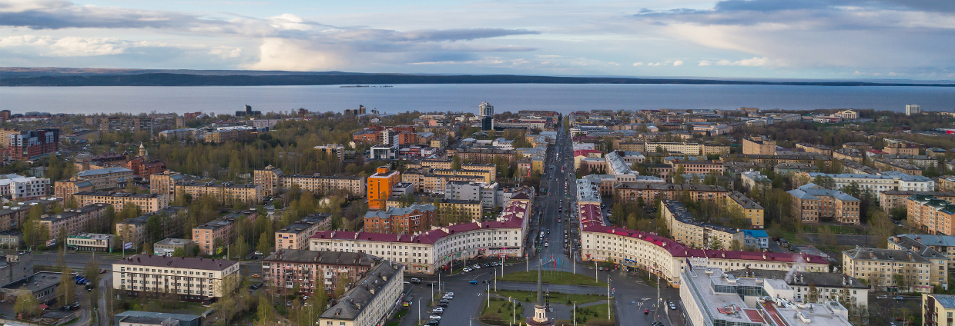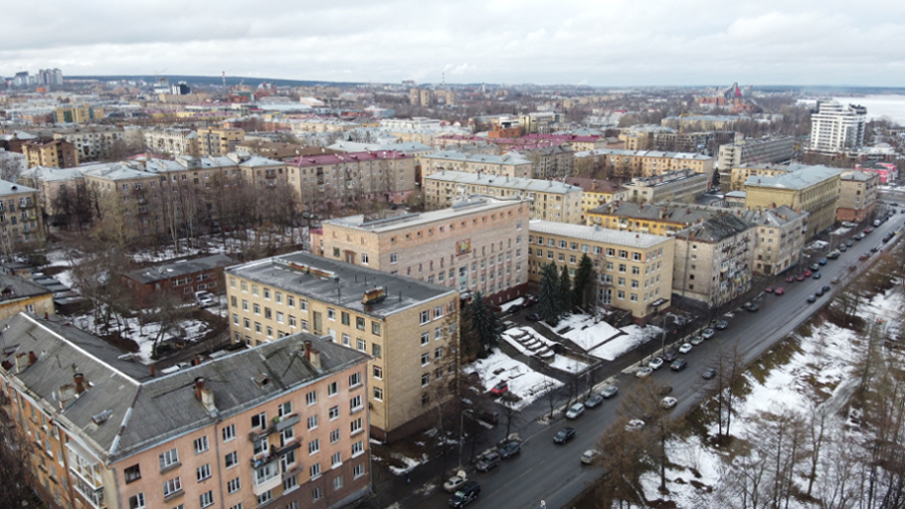Petrozavodsk
June 7, 2022The capital of the Republic of Karelia, Petrozavodsk, has the status of the historical city. The city emerged due to Emperor Peter the Great and impetuous historic events of the early XVIII century, i.e. Russia’s struggle for the access to the Baltic Sea, switching the life of the whole country to “western traditions”, and boisterous development of industries in an agricultural state. Today, Petrozavodsk covers 113 square kilometers and is home to over a third of the population of the republic (about 261,000 citizens). It stretches 25 km along the shores of Lake Onego. The center of the city is bounded by Onezhskaya embankment and a railroad in the north and south, and by the Neglinka and the Lososinka rivers in the east and west. Petrozavodsk is one of the greenest cities of Russia.

Photo by A. Savin, WikiCommons under the Free Art License (edited)
Nowadays, the city yields almost half of the national income of Karelia by its machine building, power generation, woodworking, transport, food, and light industries. However, it is also the city of youth, having two universities, about 50 schools, lyceums and gymnasiums (including a national one). The city also holds five theatres, a philharmonic hall, National Library, archive, museums and art galleries. Representing a mixture of cultures now, many people here have roots going into the Finno-Ugric one, with a separate Karelian language and culture. Currently this language is spoken by a minority, and many efforts are taken to preserve it. The National Theatre of Karelia is the world’s only professional theatre with performances in Karelian, Finnish, Veps and Russian languages.

Photo by A. Bonanno under the CC by-sa 2.0 licence
Research and education:
Petrozavodsk is home to a federal research center, a university and a state conservatory. On top of that, there are several branches of higher educational institutes and vocational education institutes in the city. The following are the partners on holding SMARTY 2020.
- Karelian Research Center of RAS, founded in 1946, is currently one of the leading scientific centers in the North-West Russia. It includes seven institutes (Biology; Northern Water Problems; Geology; Forest Research; Economics; Linguistics, History and Literature; Applied Mathematical Research) with a total of about 800 coworkers. Around 60 PhD students held their researches in KarRC. More than 300 thematic researches are conducted a year, partly supported by around 80 grants of RFBR, RFH and other funding organizations.

Photo by courtesy of SMARTY Karelia
- Institute of Applied Mathematical Research of the Karelian Research Center of RAS was founded in 1999. About 40 scientific researchers work on the following research trends: probability theory and stochastic processes, queueing theory, simulation modelling, game theory, discrete mathematics, mathematical programming, mathematical and applied statistics, development of information and telecommunications systems. Being a dynamic and young institute (with more than half of the staff being young scientists), the Institute has close collaboration with research groups in France, Italy, Hungary, Belgium, Spain, Germany, China, India and other countries, as well as cities of Russia. Many of the researchers are active in teaching, holding lecturer and professor positions at the Petrozavodsk State University.
- Petrozavodsk State University (PetrSU) was founded in 1940 as the Karelian-Finnish University and was renamed in 1956. Among its graduates, there are academicians, ministers and world-famous specialists in culture and science, heads of enterprises and workers of various branches of industry of the North-West and Northern economic regions of Russia. The university now comprises 85 chairs and 17 faculties (institutes). Nowadays, teaching staff of PetrSU is more than 1,000 people (over 500 PhD holders, 130 doctors of science and professors, 4 associates of the State Academies of the Russian Federation), about 10,000 undergraduate and graduate students study here. The university has joined the best twenty classical universities of the general Russian Universities’ rating of 2009 and has won the first place on the Internationalization criterion and the 6th place in the Brand nomination. PetrSU is a recognized leader among the institutes of higher education of the North-West Federal District of the RF in the sphere of international cooperation development. The university has 35 international agreements in force with foreign institutes of higher education, research organizations and research-and-production companies of Finland, Canada, the USA, Great Britain, Italy. The most active are exchange programs with universities of Helsinki, Oulu, Joensuu, Tampere, Kuopio, Lappeenranta, Evle.